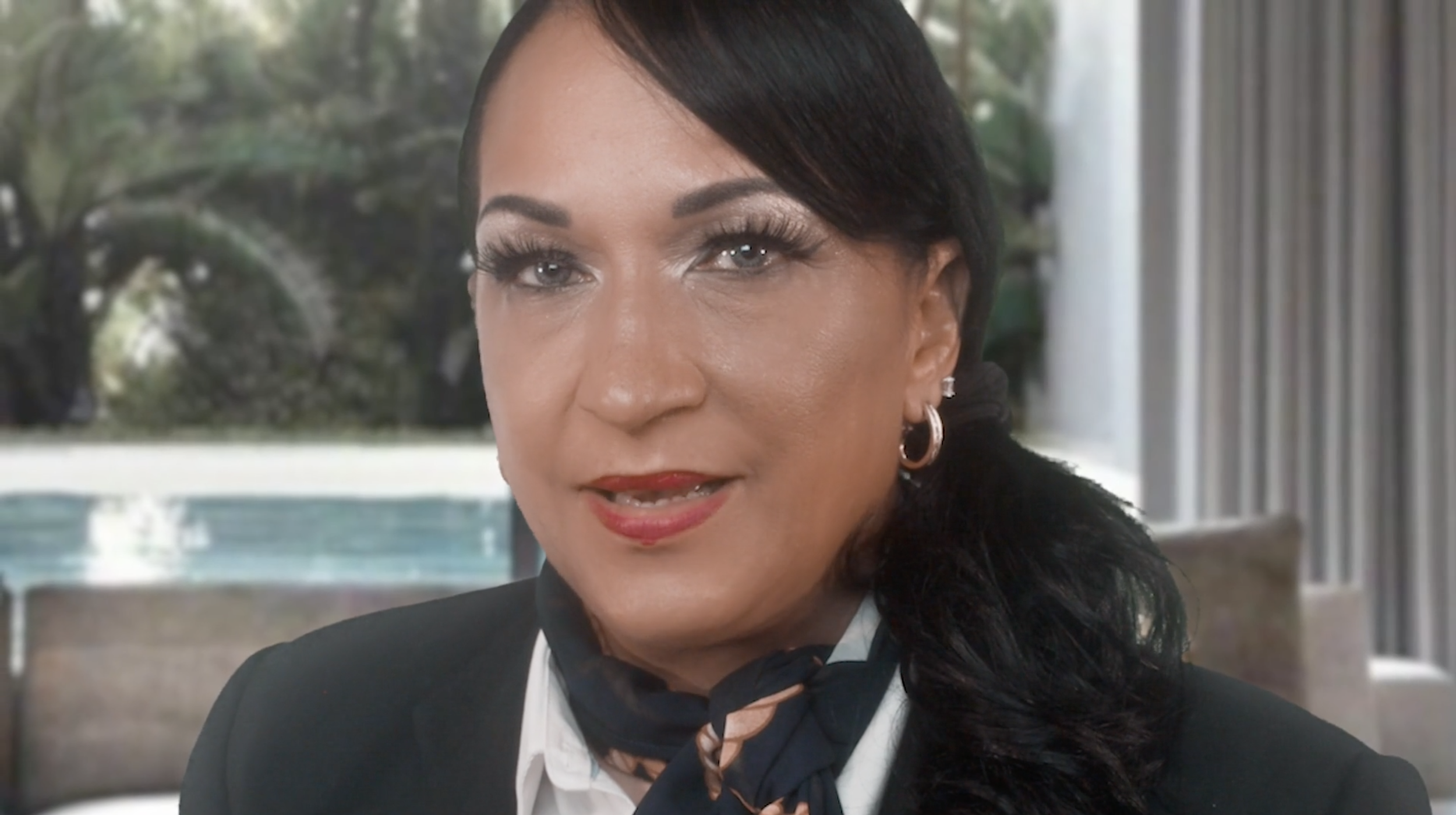Reality Is Not Good Enough
Reality Is Not Good Enough (2021)
Created and directed by: Rashayla Marie Brown
Rashayla Marie Brown’s Reality Is Not Good Enough is a reparative intervention in the exploitative reality TV genre, a non-linear meditation on power, Black womanhood, and control over the story.
The film opens with a senior Black woman, who we later learn is Rashayla’s mother, staring into the camera in a luxury home as if in a reality TV show confessional, reading a contract. In it we hear that reality TV participants are given virtually no ownership or control over their image “in perpetuity” and “throughout the universe.” For me, the opening scene reminds me of a few of Rashayla’s earlier works. In one, Thought the Universe, Rashayla reads a contract alongside a Vedic astrology text, juxtaposing corporate and cosmic governance. In the performance Rage to Master, which I saw at the Museum of Contemporary Art Chicago, Rashayla reads a contrast claiming residuals on all re-sales of her art works. She then walks the audience out of the museum and burns her past works – prints, photographs – in a small bonfire in front of the storied art institution.
The goal of Reality Is Not Good Enough is deceptively simple: “I just want to learn how people make TV shows so that I can make my own TV shows,” Rashayla says in the film.
The film appears to be motivated by her cousin and mother consenting to being in a reality show, where Rashayla learns of the exploitative contracts and the fact that most crew are white men. “That means that there are mostly women who don’t know what this process even looks like, which is why someone like her has to hire random men to do this project for her.”
We see her mom try to renegotiate the contract with the production company. “They were both having a really hard time being taken seriously while working on it,” Rashayla said in the post-screening talkback at the film’s premiere. “We had a lot of conversations about representation and what it means for her to give up the right for her image.”
In an earlier version of the film, we see a fight between her mother and a family friend, which Rashayla recorded covertly to show that her mother is not ready for visibility on corporate television.
In this new version, we see a brief, muted version of that clip, but the focus is more on how her mother feels about Rashayla filming. In a mock daytime talk show, Rashayla interviews her mother as host of “The Oprah Tyra Wendy Show,” a nod to how the talk show was one of few genres where Black women were given some ownership and control when she was growing up.
On the show mother talks about why she wanted to do the reality show, growing up mixed race and not knowing your parents in the 1960s.
“Imagine being Black in the 60s,” Rashayla narrates to photographs of her mother, citing miscegenation, misogyny, child abuse.
But Rashayla doesn’t give us her mother’s full story:
“I know you want this scene to last longer. But I cannot give you a glimpse into my world without you giving me something. Because this is my mother, and you already know that story and how it ends.”
In this sequence of scenes, we see how Rashayla negotiates the unequal power dynamics between the director and directed, filmmaker and filmed. Reality Is Not Good Enough disrupts the desire to have access to the interiority and stories of Black women. Rashayla suggests that we can repair production by ensuring those behind the camera share some affinity – not just identity – to those in front of it. This “for us by us” practice is not represented as perfect or utopic, perhaps not even more honest. But it does show care:
“How do you make a movie about women you love without harming them?,” Rashayla asks in the film. “My relationship to my mom and the elder women in my life is like the first example of feminism I have: solidarity, communal sharing, sharing responsibility, being accountable to each other, and thinking about ways to uplift each other,” she added in the post-screening discussion.
Rashayla suggests there are deeper power dynamics embedded in film as a technology. In the latter half of the film, after a meditation on colorism in the Black community, she explores the possibility of her indigenous roots. In doing so she highlights the colonialist and imperialist roots of cinema as a propaganda tool for white supremacy.
A silent film-style interstitial states:
“Folks call me Redbone, too. The first films most Americans saw were of the disappearing of Natives. And I am here.”
That continued presence, of new people daring to participate in the transformation of a harmful medium, may be the primary antidote Rashayla offers to the continued exploitation of people through media.
The film ends with footage of Rashayla teaching her young nieces how to use a camera:
“Your erasure is an epidemic. What are we going to do about it?”



